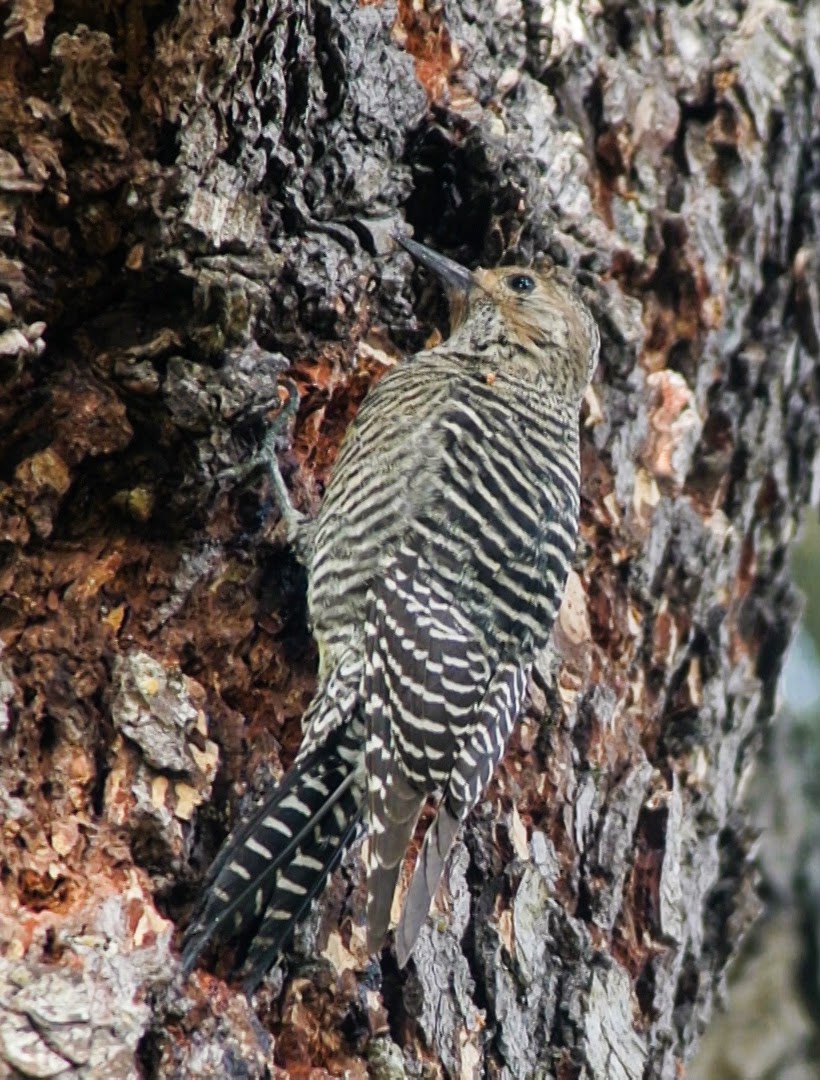The male, as usual, grabbed the spotlight as the pair stopped along the shore of pond #3, mid-way along the berm between ponds 2 and 3. Note the large shoveler-like black bill, red iris, resplendent scapular and tertial feathers, plus bits of the blue wing patch and green speculum.
The male decided this was a good spot to preen, affording varied looks at some of his features:
He continued to preen the top of his left wing, exposing more of the powder blue wing patch located on the inner wing toward the leading edge, i.e. the coverts of the secondary feathers. Toward the trailing edge of the inner wing we see the iridescent green speculum. Both wing patch and speculum are seen better in flight. Also note the color of the crown, dark brown rather than cinnamon:
He then obliged with a wing stretch to show he deserves the cyanoptera part of the name ("blue wing"). The shingled feathers in front of and above the blue patch are the scapulars. Great look at the bill, too. And check out the foot, which includes gray webbing and really sharp toenails. One foot is stretched backward. His cryptic mate nearby ignores his showmanship:
Female dabbling ducks have simple plumage dominated by shades of brown, allowing them to blend with dried grasses as they incubate on the nest. To distinguish the females of the various dabbler species we rely mostly on details of the bill and face. The Cinnamon hen soon took the stage to allow close study. In the shot below note the bill, generous in size and trimmed with some orange at the edges. The glimpse of powder blue tells us she is one of the 3 blue-winged dabblers, Northern Shoveler, Cinnamon Teal and Blue-winged Teal (see end note). The bill shows she's not a Northern Shoveler. The plain face helps sometimes, as most dabbler females as a dark line through the eye, as in the Mallard, Green-winged Teal, et. al. The Blue-winged Teal looks very similar to our Cinnamon Teal hen, sharing a relatively plain face, similar bills and blue wing patch. Note the faint white eye arcs, and a bit of white at the base of the bill here:
A few years ago a pair of Blue-winged Teals spent some time on pond #1, and loafed near the shore with some Cinnamon Teals. Here's a decent shot of the female Blue-winged Teal to compare with the Cinnamon hen above. The bills may be similar, but the Bue-winged hen has a more noticeable eye line, more prominent white eye arcs, and more extensive white at the base of the bill, extending to the throat:
Her mate was on the nearby shore, loafing with a Cinnamon Teal. Note the pink glow on the side of the Blue-winged Teal's face below the crown - an iridescence similar to what we are sometimes lucky to see on the Northern Pintail male.
The Blue-winged male occasionally left the shore, affording a better look at the unmistakeable white crescent:
As you might guess, the Cinnamon and Blue-winged are close relatives. The top view of their wings is almost identical, and hybrids of the species are seen occasionally, such as this male Cinnamon x Blue-winged seen earlier this winter at Las Gallinas:
Endnote: Well, there are other dabbling ducks with a blue wing patch, including the rarely seen Garganey, Anas querquedula plus 3 other Shovelers (Australian, Red, and Cape).


























